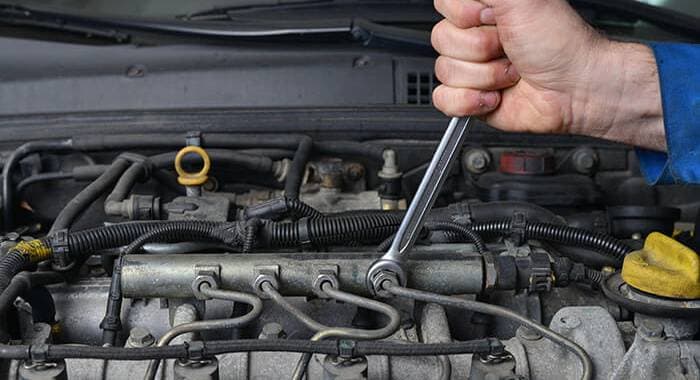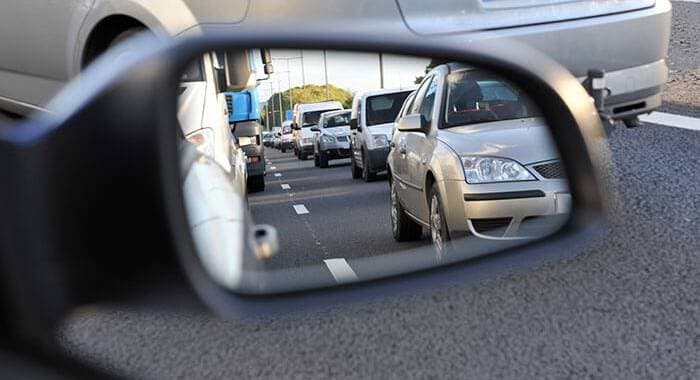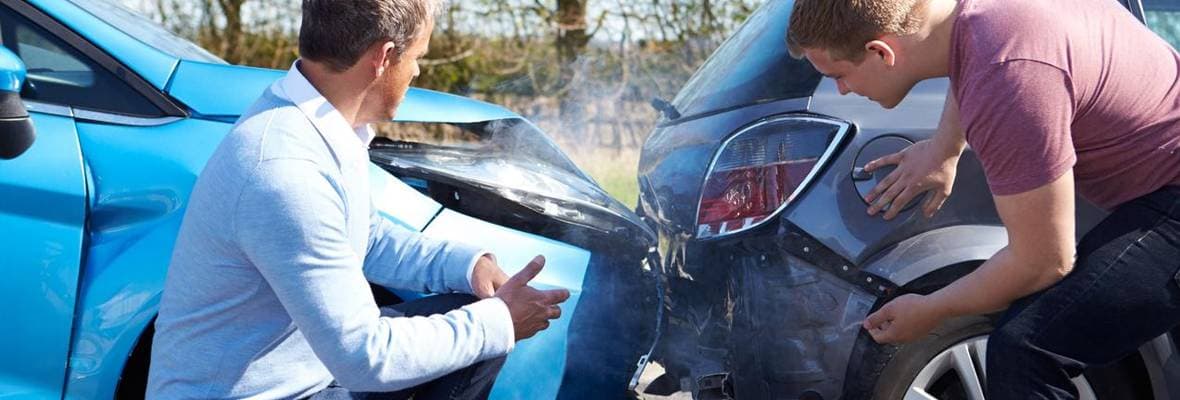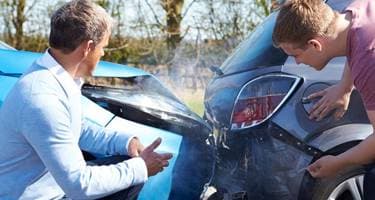Related articles
- 9 road safety tips for your teen learner driver
- Distracted driving facts
- 5 simple ways to make your car safer
- How to Safely Share the Road With Non-Motorists
- 9 tips for staying safe in service stations
- Child Car Seat Laws And Regulations
- How to reduce the risks to children of reversing cars
- Licensing of older drivers in Australia
- Modern Car Safety Features
- What cars have ISOFIX in Australia
- ANCAP safety ratings explained
- How to reverse park
- How to Avoid or Minimise Hail Damage to Your Car
- School road safety tips for families
- Using mirrors correctly to eliminate blind spots
- How to choose, install & adjust your children’s car seats
- Driving safety tips
- Give way rules - Who goes first?
- Sharing the Road Safely With Heavy Vehicles
- Do you know your road signs?
- What to do after a car accident
- What To Do in Event of a Crash with Wildlife
- How to drive safely in wet weather
- Why are young drivers considered high risk?
- Which Australian state has the strictest road rules?
- 10 Obscure road rules you didn’t know existed in Australia
- Which states and cities in Australia have the most motor vehicle thefts?
- Learner Driver Restrictions Australia
- Learning How to Drive
- Supervising a Learner Driver: What are the rules?
- Electric Scooter Laws in Australia
- School Road Safety for Kids
Disclaimer: This information is general in nature only. While Budget Direct has endeavoured to ensure the information we’ve relied on is accurate and current, we do not guarantee it. Budget Direct accepts no liability for this information.
Do you know that within the next 24 hours, nearly 5,000 Australians will be involved in a road accident? And that over 500 will be seriously injured and four will die?
While news reports tend to focus on fatalities, the national road injury toll is also worth noting: According to a 4BC report, since 1990 we’ve been averaging 30,000 serious injuries from car accidents each year.[1]
And yet many of us don’t give road safety a second thought — despite the fact driving is statistically one of the most dangerous things we do in the course of a typical day.
So much so that, if you were flying to a crime-ridden Third World country, it would be your safety during the drive to the airport that your family would have most cause to worry about.
Here are some useful car-safety tips to help keep you out of trouble on the road:
Common driving mistakes
Every day, Australians make avoidable mistakes on the road that put them in danger. Here are 10 of the worst:
Not wearing a seat belt
In view of all the overwhelming evidence that seat belts save lives, it’s surprising there are still people out there who don’t bother to strap themselves in before they get rolling.
Fortunately, many newer vehicles come with annoying alarms that warn you if you’ve failed to buckle up.
Going too fast
It’s basic physics: The faster you drive, the nastier the impact will be if you hit something.
The road is safer when drivers travel at roughly the same speed. When someone is in a hurry (or going too slow), it becomes more dangerous.
Driving when tired
It’s a myth that you can somehow ‘control’ your level of tiredness while driving by gulping coffee, rolling down the windows for more air, cranking up the volume on the radio or getting equally exhausted passengers to ‘keep you awake by talking’.
There’s only one known cure for tiredness, and that’s sleep. Drivers who fall asleep at the wheel (even for two or three seconds) are incapable of slowing down or avoiding a crash. A drowsy driver is just as dangerous as an inebriated one. So, stop and get some sleep – before it’s too late.
Distractions, distractions
Behind the wheel of a moving car is no place to check text messages, fix your make-up, wolf down a late breakfast, sip hot coffee or have a conversation on your phone.
Driving is a complex skill that requires 100% of your concentration. So, when you’re driving, just drive.
Failing to give way
Ignoring red lights and stop signs is dangerous. Failure to understand how to give way when merging into freeway traffic is also dangerous.
It’s vital to know who has right of way in every driving situation.
Give-way rules: Who goes first?
Not planning ahead
We’ve all encountered them: Drivers who signal to turn at the last possible moment, try to change lanes in the middle of a roundabout, or decide to cross four lanes of traffic in five seconds because they have no idea where they’re going.
These sorts of unexpected moves lead to accidents. Plan ahead.
Alcohol and drugs
Alcohol and drugs affect a driver’s ability to operate a vehicle safely. Reaction times slow down and basic decision-making becomes impaired.
If you’re heading out on the town for a good time, take a taxi or nominate a designated driver so you make it back home safely.
Following too closely
Tailgating is more than just plain rude — it’s also extremely dangerous.
There should always be a three-second gap (minimum) between you and the car in front, at any speed.
One of the keys to defensive driving is constant awareness of the amount of room between you and the vehicles closest to you.
Always try to give yourself ample room to escape a dangerous situation.
Underestimating how weather affects driving
Have you noticed that there are always more traffic accidents when it rains? That’s because wetter roads are more slippery and visibility is reduced when it rains, hails, or snows.
Slowdown in bad weather, especially on winding roads. If the weather gets really bad, find a safe place to pull over and stop.
5 common road hazards and how to deal with them
Excessive lane changing
Constantly changing lanes in order to shave a few seconds off a journey is downright silly — but you still see a lot of drivers doing it.
In heavy traffic with limited room, this incessant weaving is extremely dangerous to everyone on the road.
The funny thing is that when you pull up to a traffic light five kilometres up the road, you often see these same drivers stuck at the same lights as you are – their “clever” lane changing hasn’t saved them any time at all.
Is your car safe to drive?

Maintaining your car has several advantages:
- it’ll be more likely to pass any roadworthy test required to renew your registration or sell the vehicle)
- you’ll have a safer car to drive
- you’ll save money on fines.
Police can fine you for all sorts of maintenance infractions: broken taillights, obscured license plates, bald tyres, etc. It’s better to spend your money on maintenance than on fines!
If you’re after a roadworthiness certificate, you’ll need to visit an authorised vehicle tester.
They’ll look for things like brake defects, faulty lights, tyre condition, leaks, excessive engine noise or smoke, radiator condition, seat-belt security and other details.
Each state has its own rules and regulations surrounding roadworthiness inspections; check beforehand so you know what to expect.
Fluids
There’s plenty you can do yourself to keep your car in good shape. Regularly check for fluid levels and leaks: oil, radiator coolant, brake fluid, transmission fluid, battery water levels, etc.
Leaks not only reduce your car’s performance, they’re often an indicator of a bigger issue that might wreck your engine if left untreated.
Tyres
A tyre blowout while you’re cruising down the freeway at 100 kilometres per hour is not a fun experience.
Ensure your tyres have enough tread and the correct amount of air pressure.
Windscreens / wipers
There’s nothing more frustrating than a faulty windscreen wiper when the weather turns on you.
It’s vital to have clear visibility through the windscreen, especially directly in front of the driver’s seat.
Keep a pristine rag in your car to clean the inside of the windows if they get dirty or fogged up and repair any chips or cracks in your windscreen as soon as possible.
If they can’t be repaired, have the entire windscreen replaced. If you can’t see properly, you can’t drive properly.
Lights, horn and seat belts
Get a friend to walk around your car as you test its headlights, parking lights, indicators, brake lights, hazard lights and any others.
Check the horn at the same time, and while you’re in the car closely inspect the seat belts to ensure they’re all in good shape.
Handy items
There are several items that can come in handy in the car.
A small first-aid kit for the glovebox is sensible, as is a sturdy torch and spare batteries.
Have a couple of rags at the ready — a clean one for wiping the inside of the windscreen if it gets dirty or fogged up, and a dirty one for engine oil top-ups, removing radiator caps and other grimy jobs.
If you don’t have a GPS installed, a map reference book should be carried so you can find streets you’re not familiar with.
At the same time, you should remove anything from your car that might become a dangerous projectile if you’re forced to break heavily.
National Road Safety Week
Budget Direct Community Manager Gerry O-Shaughnessy says it’s important to get behind initiatives like National Road Safety Week (NRSW) that promote safer use of our roads.
“[Driving is] such an automatic part of our lives that we don’t really give it a second thought — despite the fact that driving is statistically one of the most dangerous things we do in the course of a typical day,” Gerry says.
“When it comes to safety in and around vehicles, all of us can use as much sensible advice as we can get. So, we encourage you to take a look at the NRSW’s interactive resources and become informed about road safety.”
Drive smart, drive safe
There’s not a lot you can do about the skill levels of other drivers, but you can certainly improve your own, if you choose to.
Here are some tips to help you become a better and safer driver:
Take a defensive driving course
A defensive driving course is a good idea for all drivers, regardless of their experience.
These courses help you see things from the other drivers’ perspectives (not just yours).
They mix practical and theoretical skills that help minimise risk by making you a more alert, proactive driver.
More specifically, they improve your ability to look ahead and identify potential hazards while understanding the relationship between speed, reaction time and stopping distances.
You’ll learn how to put the road rules into practice, the dynamics of what causes vehicle instability and skids, and the crucial importance of keeping your distance from other cars.
Turn off your phone while you're driving
Using a mobile phone while driving not only increases your risk of a crash but can result in a hefty penalty (demerit points and a $1,000 fine in Queensland, for example).
Research shows that the visual distraction of mobile phones in a car reduces focus and slows reaction times.
Did you know that when you’re travelling at 50 km/h and take your eyes off the road for just two seconds, you’re essentially driving blind for 27 metres?[2]
If you need to make or receive a call, pull over, park and turn off the engine first.
Don’t send or read text messages, look up phone numbers or do anything with your phone at all while you’re behind the wheel of a car.
Find out how to set your mobile phone to ‘Do Not Disturb’ while driving.
See the results of our Using a mobile phone while driving: Australian survey 2020.
Keep your hands on the wheel
Both hands should be on the steering wheel when you’re driving. If they’re not, you’re going to have much more trouble swerving to avoid obstacles.
If you want to reach for that pair of sunglasses that’s fallen down somewhere in the car, wait until you’ve stopped.
Know how to pass (and be passed) safely
Overtaking another vehicle always involves some risk. So, before you do it, ask yourself these questions:
- Do I really need to overtake at all?
- Do I have a clear view of approaching traffic?
- Is there a straight stretch of road up ahead?
- Is the road wide enough?
- Are there are any side streets where traffic can interfere with passing?
- Are there posted overtaking signs?
A lot of people seem to believe it’s legal to briefly exceed the speed limit when passing the car in front. Not true — you must never go above the posted limit at any time.
If you’re being passed, maintain your speed, stay within your lane and allow reasonable space for the other car to overtake.
The practice of speeding up when someone is trying to pass you is not only childish, you could end up having an accident yourself.
Know where you're going
A lot of accidents happen because people are stressed out by being lost.
They’re fiddling with their in-car GPS, trying to read a map or crawling along looking for street names or house numbers, completely oblivious to the traffic around them.
Have your route planned beforehand. Google Maps is a handy resource for learning the best way to get from A to B.
Geographically confused drivers are dangerous drivers, so give yourself plenty of extra time to reach destinations you’re not familiar with.
Watch your speed
According to the Road Safety Commission in Western Australia, between 2004 and 2013 an average of 14% of serious accidents resulted from speeding, with males in the 17–39 age groups most at risk from speed-related crashes.[3]
The stopping distance of a car travelling at 100 km/h is 97 metres, and that’s under ideal driving conditions.
Add some wet weather, driver fatigue or alcohol consumption to the mix and that distance increases.
A head-on collision at 110 km/h generally means huge damage to the dashboard and footwell areas and destruction of the front passenger compartment.
At that sort of speed, you’re likely to be seriously injured or die.
Adjust your mirrors and seat position
To be able to drive safely, your seat should be adjusted so the foot and brake pedals are easily reached and aligned with the driving position and steering wheel.

If you’ve got to lean over (even slightly) to see out of your rear-view mirrors, they need adjusting.
Even with perfectly positioned mirrors, you should look back and double-check behind you when changing lanes or making any other major manoeuvre (especially a U-turn).
If you’re not alert, don’t drive
All sorts of things can affect your ability to drive safely: drugs, alcohol, stress, mental distractions, sleepiness and general fatigue.
The bottom line is: Don’t drink and drive, don’t drive under the influence of drugs (prescription or not), stop for a rest or a sleep if you need to, and don’t get in the car if you’re not at your best, mentally or emotionally.
Driving requires full concentration and composure, so anything that detracts from that is a serious safety issue.
Your personal safety
You should always have a pen and paper, a torch and emergency numbers in your car.
If you break down, park your car in a safe, well-lit area, turn on your hazard lights and put your bonnet up.
Call for roadside assistance and, if it’s safe to do so, stay inside your car with the doors locked.
If a stranger stops to assist, thank them before explaining that help is on the way. If they offer to give you a lift, gently turn down their offer.
If you think someone is following you, remain calm, drive normally and proceed to the nearest police station or brightly lit store or service station.
Don’t get out of your car until you’re sure it’s safe.
While it’s illegal to use your mobile phone while driving, carrying a mobile phone or personal alarm is advisable, especially when driving alone.
Even a whistle is better than nothing for attracting attention.
Driver courtesy helps everybody
It can be a rude world out there. Road rage is a reality, selfish drivers are a fact of life and there are more cars on the road than ever.
But that’s all the more reason to show basic decency and consideration on the roads.
Try to be forgiving of other drivers’ mistakes, no matter how frustrating they might be.
Don’t engage with obviously angry drivers (whether they’re angry at you specifically or the world in general), and don’t make rude gestures.
Concentrate fully on your own safe driving — you can’t control the behaviour of others.
Your horn is designed for warning people, not to express anger or frustration. And, yes, the police can and will book you for using your horn inappropriately.
The safest driver is a confident, alert and relaxed driver — not a cranky one.
Be conscious of the needs of pedestrians, cyclists and motorcyclists, and remember that heavy vehicles may need more warning to slow down or stop than cars.
If someone lets you into traffic or does something courteous for you, acknowledge their kindness with a friendly wave.
Select your car insurance carefully
Sometimes even the safest drivers have accidents, so make sure you have quality car insurance that covers you for the unexpected.
Look for policy benefits that meet your specific needs, whether you opt for Comprehensive, Third Party Property Only, or Third Party Property, Fire and Theft cover.
It’s easy to compare prices and policies online, so do your homework and don’t stop looking until you find the cover you want at a price you can afford.
Sources
Related articles
- 9 road safety tips for your teen learner driver
- Distracted driving facts
- 5 simple ways to make your car safer
- How to Safely Share the Road With Non-Motorists
- 9 tips for staying safe in service stations
- Child Car Seat Laws And Regulations
- How to reduce the risks to children of reversing cars
- Licensing of older drivers in Australia
- Modern Car Safety Features
- What cars have ISOFIX in Australia
- ANCAP safety ratings explained
- How to reverse park
- How to Avoid or Minimise Hail Damage to Your Car
- School road safety tips for families
- Using mirrors correctly to eliminate blind spots
- How to choose, install & adjust your children’s car seats
- Driving safety tips
- Give way rules - Who goes first?
- Sharing the Road Safely With Heavy Vehicles
- Do you know your road signs?
- What to do after a car accident
- What To Do in Event of a Crash with Wildlife
- How to drive safely in wet weather
- Why are young drivers considered high risk?
- Which Australian state has the strictest road rules?
- 10 Obscure road rules you didn’t know existed in Australia
- Which states and cities in Australia have the most motor vehicle thefts?
- Learner Driver Restrictions Australia
- Learning How to Drive
- Supervising a Learner Driver: What are the rules?
- Electric Scooter Laws in Australia
- School Road Safety for Kids



